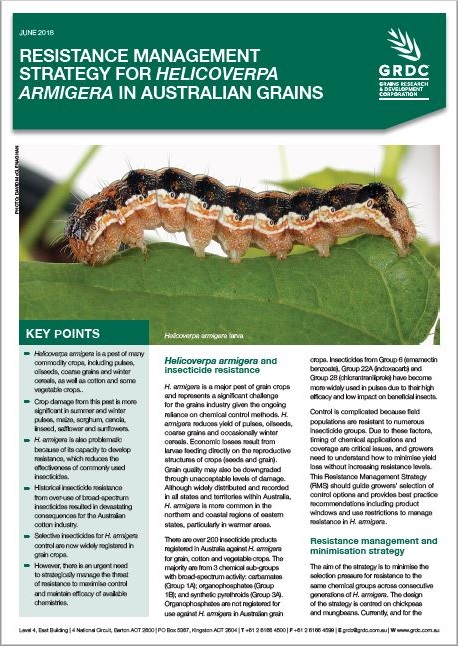Resistance management strategy for Helicoverpa armigera in Australian grains
Resistance management strategy for Helicoverpa armigera in Australian grains
Published: 30 Jun 2018
H. armigera is a major pest of grain crops and represents a significant challenge for the grains industry given the ongoing reliance on chemical control methods. H. armigera reduces yield of pulses, oilseeds, coarse grains and occasionally winter cereals.
Key Points
- Helicoverpa armigera is a pest of many commodity crops, including pulses, oilseeds, coarse grains and winter cereals, as well as cotton and some vegetable crops.
- Crop damage from this pest is more significant in summer and winter pulses, maize, sorghum, canola, linseed, safflower and sunflowers.
- H. armigera is also problematic because of its capacity to develop resistance, which reduces the effectiveness of commonly used insecticides.
- Historical insecticide resistance from over-use of broad-spectrum insecticides resulted in devastating consequences for the Australian cotton industry.
- Selective insecticides for H. armigera control are now widely registered in grain crops.
- However, there is an urgent need to strategically manage the threat of resistance to maximise control and maintain efficacy of available chemistries.
The aim of the resistance management strategy (RMS) is to minimise the selection pressure for resistance to the same chemical groups across consecutive generations of H. armigera. The design of the strategy is centred on chickpeas and mungbeans, however, the principles of this RMS can be applied to other grain crops.
Download PDF
Region: National

